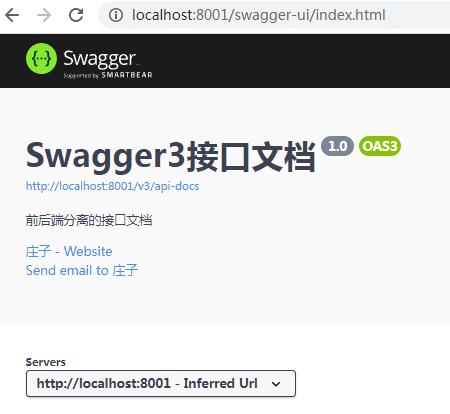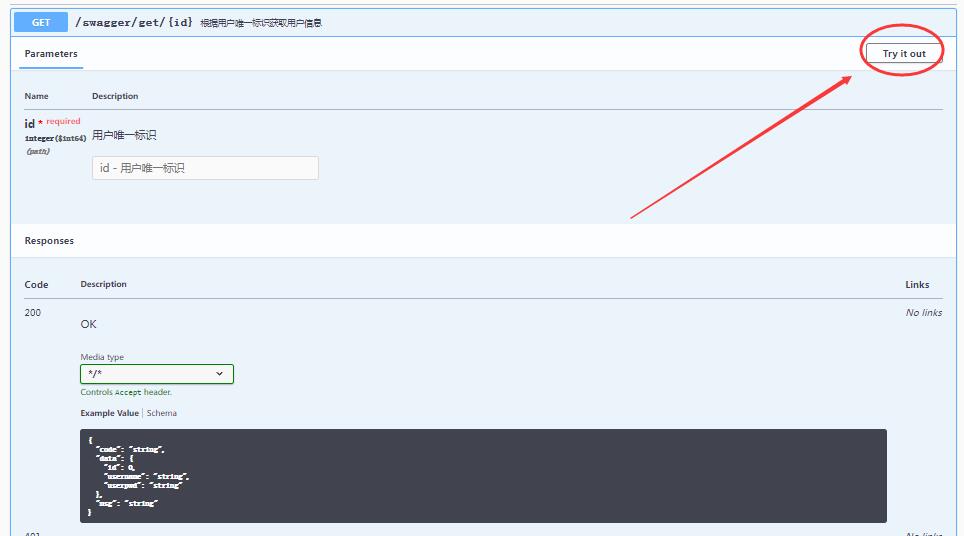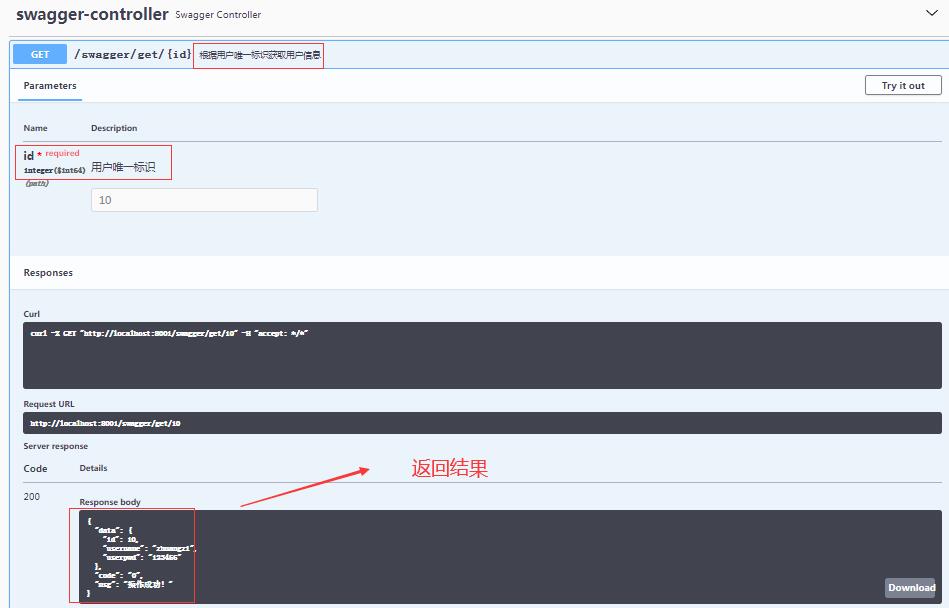对SpringBoot2.7.3版本,swagger2.x版本不再适用,所以就选择了swagger3版本,但是相较于swagger2版本,swagger3版本更加麻烦,具体教程如下:
第一步:引入依赖
<dependency> <groupId>io.springfox</groupId> <artifactId>springfox-boot-starter</artifactId> <version>3.0.0</version> </dependency>
第二步:在启动类Application中加上注解@EnableOpenApi
@EnableOpenApi
@SpringBootApplication
public class SpringBootApplication {
public static void main(String[] args) {
SpringApplication.run(SpringBoot01Application.class, args);
}
}第三步:配置接口文档config
package com.example.springboot01.config;
import io.swagger.annotations.ApiOperation;
import org.springframework.beans.BeansException;
import org.springframework.beans.factory.config.BeanPostProcessor;
import org.springframework.context.annotation.Bean;
import org.springframework.context.annotation.Configuration;
import org.springframework.util.ReflectionUtils;
import org.springframework.web.servlet.mvc.method.RequestMappingInfoHandlerMapping;
import springfox.documentation.builders.ApiInfoBuilder;
import springfox.documentation.builders.PathSelectors;
import springfox.documentation.builders.RequestHandlerSelectors;
import springfox.documentation.oas.annotations.EnableOpenApi;
import springfox.documentation.service.ApiInfo;
import springfox.documentation.spi.DocumentationType;
import springfox.documentation.spring.web.plugins.Docket;
import springfox.documentation.spring.web.plugins.WebMvcRequestHandlerProvider;
import java.lang.reflect.Field;
import java.util.List;
import java.util.stream.Collectors;
import springfox.documentation.service.Contact;
@Configuration
@EnableOpenApi
public class SwaggerConfiguration {
@Bean
public Docket createRestApi(){
return new Docket(DocumentationType.OAS_30)
.apiInfo(apiInfo())
.select()
.apis(RequestHandlerSelectors.withMethodAnnotation(ApiOperation.class))
.paths(PathSelectors.any())
.build();
}
private ApiInfo apiInfo(){
return new ApiInfoBuilder()
.title("Swagger3接口文档")
.description("前后端分离的接口文档")
.contact(new Contact("庄子","http://www.ncyteng.com","3168765867@qq.com"))
.version("1.0")
.build();
}
@Bean
public static BeanPostProcessor springfoxHandlerProviderBeanPostProcessor() {
return new BeanPostProcessor() {
@Override
public Object postProcessAfterInitialization(Object bean, String beanName) throws BeansException {
if (bean instanceof WebMvcRequestHandlerProvider) {
customizeSpringfoxHandlerMappings(getHandlerMappings(bean));
}
return bean;
}
private <T extends RequestMappingInfoHandlerMapping> void customizeSpringfoxHandlerMappings(
List<T> mappings) {
List<T> copy = mappings.stream().filter(mapping -> mapping.getPatternParser() == null)
.collect(Collectors.toList());
mappings.clear();
mappings.addAll(copy);
}
@SuppressWarnings("unchecked")
private List<RequestMappingInfoHandlerMapping> getHandlerMappings(Object bean) {
try {
Field field = ReflectionUtils.findField(bean.getClass(), "handlerMappings");
field.setAccessible(true);
return (List<RequestMappingInfoHandlerMapping>) field.get(bean);
}
catch (IllegalArgumentException | IllegalAccessException e) {
throw new IllegalStateException(e);
}
}
};
}
}第四步:在application.properties文件中加入语句
spring.mvc.pathmatch.matching-strategy=ant_path_matcher
或者在application.yml中加入
spring: mvc: pathmatch: matching-strategy: ant_path_matcher
第五步:打开浏览器地址栏输入
http://localhost:8001/swagger-ui/index.html
注意:swagger2的网页路径为http:/localhost:8001/swagger-ui.html

Swagger3 的使用
下面我们开始使用Swagger3,主要来介绍 Swagger3 中的几个常用的注解,分别在实体类上Controller 类上以及Controller 中的方法上,最后我们看一下 Swagger3 是如何在页面上呈现在线接口文档的,并且结合Controller 中的方法在接口中测试一下数据
实体类注解:
import io.swagger.annotations.ApiModel;
import io.swagger.annotations.ApiModelProperty;
import lombok.Data;
@Data
@ApiModel(value = "用户实体类")
public class User {
@ApiModelProperty(value = "用户唯一标识")
private Long id;
@ApiModelProperty(value = "用户名")
private String username;
@ApiModelProperty(value = "用户密码")
private String userpwd;
public User(Long id, String username, String userpwd) {
this.id = id;
this.username = username;
this.userpwd = userpwd;
}
}解释下 @ApiModel 和 @ApiModelProperty 注解:
@ApiModel 注解用于实体类,表示对类进行说明,用于参数用实体类接收。
@ApiModelProperty 注解用于类中属性,表示对 model 属性的说明或者数据操作更改。
Controller 类中相关注解
@RestController
@RequestMapping("/swagger")
// @Api(value = "Swagger3在线接口文档") swagger2使用value
@Api(tags = "Swagger3在线接口文档") swagger3使用 tags
public class SwaggerController {
@GetMapping("/get/{id}")
@ApiOperation(value = "根据用户唯一标识获取用户信息")
public JsonResult<User> getUserInfo(@PathVariable @ApiParam(value = "用户唯一标识") Long id) {
// 模拟数据库中根据id获取User信息
User user = new User(id, "zhuangzi", "123456");
return new JsonResult(user);
}
}我们来学习一下 @Api 、 @ApiOperation 和 @ApiParam 注解。
@Api 注解用于类上,表示标识这个类是 swagger 的资源。
@ApiOperation 注解用于方法,表示一个 http 请求的操作。
@ApiParam 注解用于参数上,用来标明参数信息。
再次浏览信息页面信息

测试一下:

